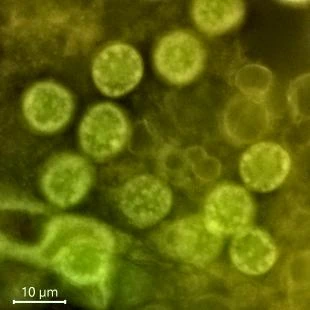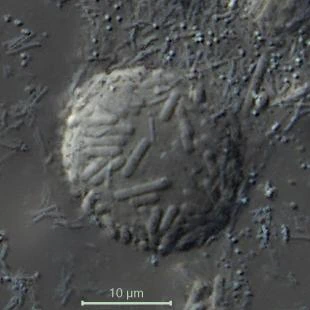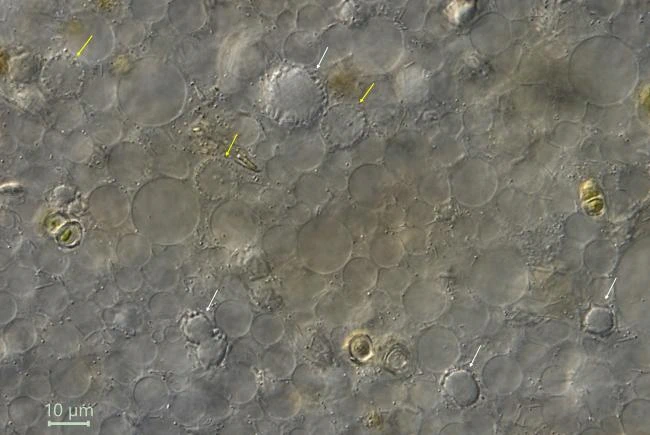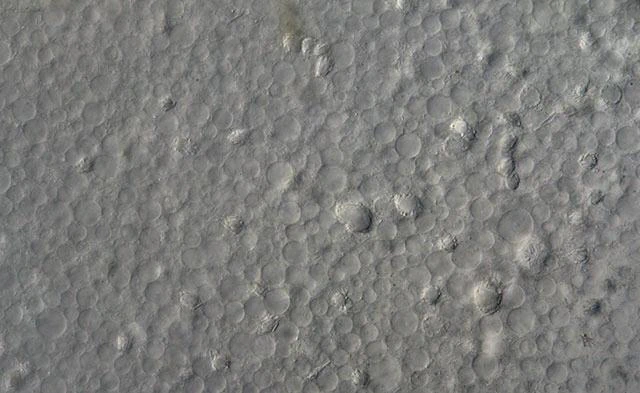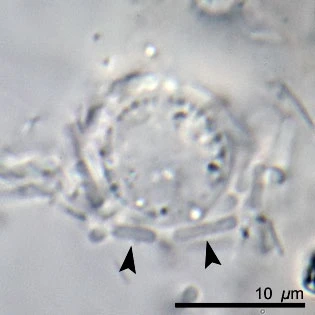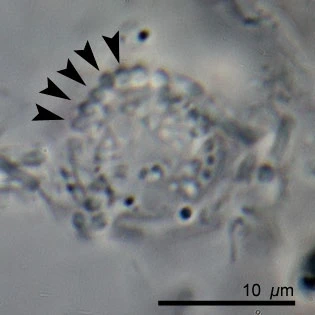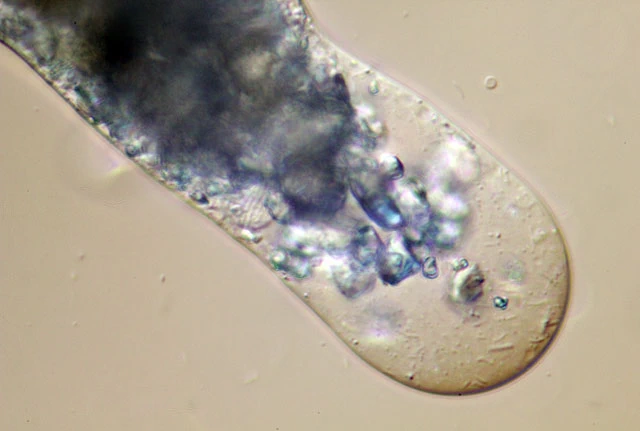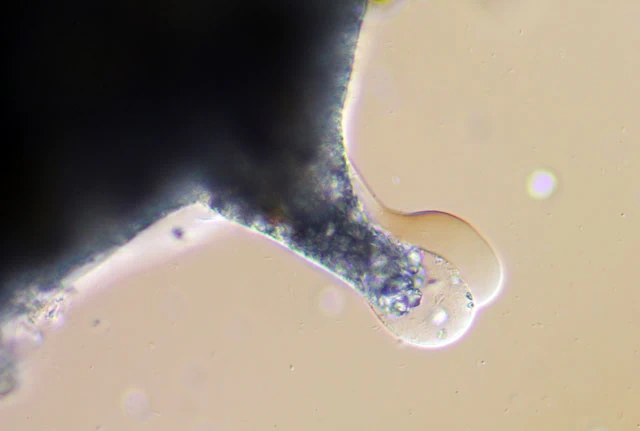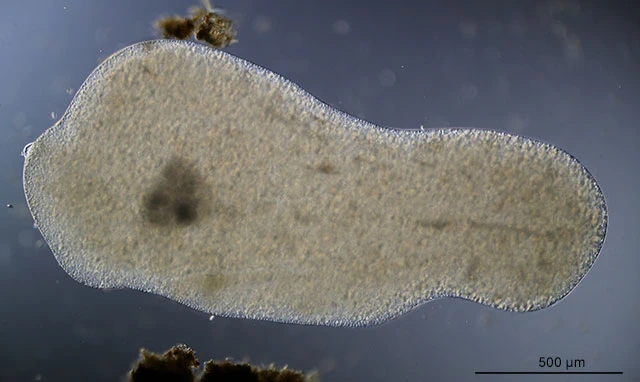
Pelomyxa palustris Greeff, 1874
Diagnosis: Cells amoeboid, reaching 5 mm long with a large anterior pseudopod and a posterior uroid. With numerous nuclei. Short cilia have been demonstrated. Cytoplasm contains usually numerous glycogen bodies, as large or larger as the nuclei (10 µm). Nuclei surrounded by symbiotic bacteria. Symbiotic bacteria present.
Habitat: In sediments of swamped stagnant and low-flow freshwater reservoirs at a depth of 20 – 50 cm. Common. I also found numerous specimens in water filled tree hollows.
Remarks: A complex life cycle has been described. However, recent investigations (Frolov et al, 2004, 2005, 2006, 2011) indicate that this complex life cycle doesn’t exist and that the several stages in this life cycle are valid species, as is Pelomyxa binucleata. The question is whether the name Pelomyxa palustris covers a distinct species or a morphotype-complex.
